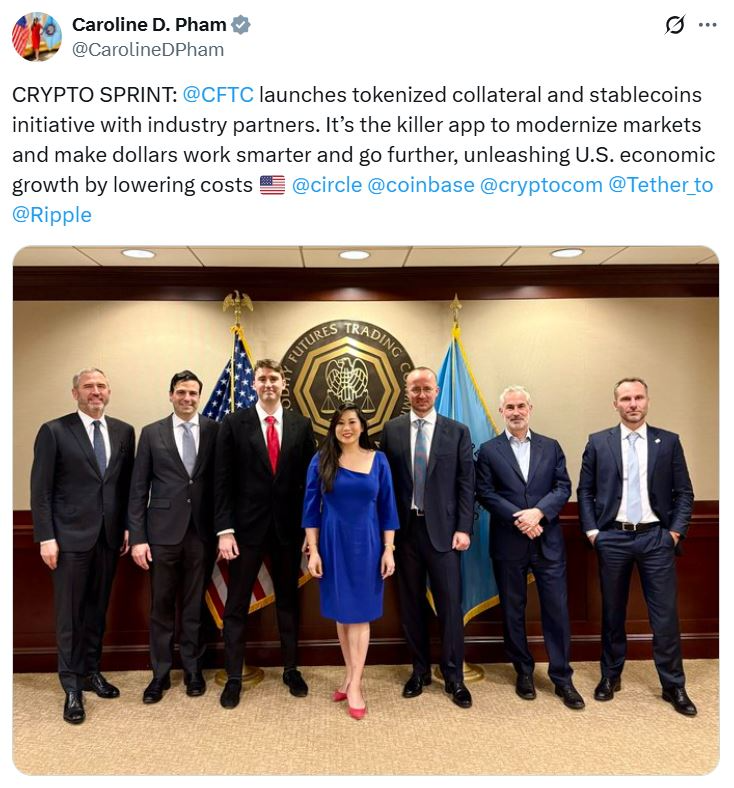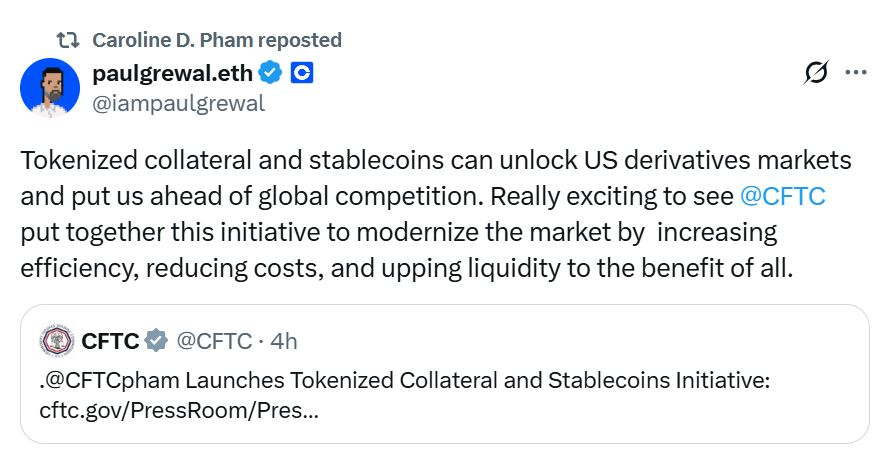The CFTC is proposing to allow stablecoins and other tokenized assets to be used as collateral in regulated derivatives markets, aiming to treat trusted stablecoins like cash or Treasurys and unlock 24/7 liquidity while stakeholders comment through Oct. 20.
-
CFTC to permit tokenized collateral in derivatives
-
Stakeholders invited to comment on tokenized stablecoins until Oct. 20
-
Industry leaders (Circle, Tether, Ripple, Coinbase, Crypto.com) publicly support the proposal
CFTC stablecoin collateral: regulators seek comments on tokenized assets as derivatives collateral—read how this could change market liquidity and risk management.
What is the CFTC’s plan for stablecoin collateral?
CFTC stablecoin collateral refers to a proposed framework by the Commodity Futures Trading Commission to allow tokenized assets, including payment stablecoins, to be posted as collateral in regulated derivatives trading. The agency is soliciting stakeholder feedback through Oct. 20 to finalize technical and custody guardrails.
How would tokenized collateral work in derivatives markets?
Tokenized collateral would function like existing non-cash collateral (e.g., securities) but held and transferred via distributed ledger technology. The CFTC aims to define valuation, custody, settlement and reserve requirements so stablecoins can be treated similarly to cash or U.S. Treasurys.
Acting Chair Caroline Pham emphasized working “closely with stakeholders” and positioned collateral management as a primary use-case for stablecoins in regulated markets. Industry executives from Circle, Tether, Ripple, Coinbase and Crypto.com publicly endorsed the approach.

Why are industry leaders backing tokenized collateral?
Executives say tokenized collateral—especially trusted stablecoins like USDC and USDT—can lower funding costs, reduce settlement risk, and provide round-the-clock liquidity. Circle president Heath Tarbert said the GENIUS Act framework enables licensed U.S. payment stablecoins to be integrated into traditional markets.
Coinbase chief legal officer Paul Grewal described tokenized collateral as a way to “unlock US derivatives markets and put us ahead of global competition.” Ripple’s stablecoins lead highlighted that clear rules for valuation and custody will build institutional trust and resilience.
When did this initiative begin and what are the next steps?
The initiative traces to early 2025 workstreams, including the CFTC’s Crypto CEO Forum and recommendations from the Global Markets Advisory Committee’s Digital Asset Markets Subcommittee. The agency’s public comment period runs until Oct. 20, after which the CFTC will consider technical standards and any pilot programs.

How does this fit in the broader U.S. crypto regulatory landscape?
This move complements other agencies’ efforts: Congress passed the GENIUS Act earlier this year to regulate payment stablecoins, and the SEC has signaled innovation-focused exemptions and Project Crypto to modernize securities rules for onchain markets.
Regulatory alignment aims to enable banks and institutional counterparties to accept tokenized collateral while maintaining market integrity and consumer protections.
Frequently Asked Questions
What types of stablecoins could be used as collateral?
Trusted payment stablecoins issued by licensed entities—such as fiat-backed tokens—are the primary candidates, subject to reserve, governance and custody rules set by regulators.
Will tokenized collateral reduce settlement times?
Yes. Tokenized assets can enable faster, near-instant settlement and 24/7 liquidity, lowering counterparty and intraday funding risks for derivatives markets.
Key Takeaways
- Regulatory shift: The CFTC is proposing tokenized collateral for derivatives with a public comment period through Oct. 20.
- Industry support: Major stablecoin issuers and exchanges back the initiative, citing liquidity and cost benefits.
- Next steps: Final standards will depend on stakeholder feedback, pilot design and alignment with the GENIUS Act and other agency efforts.
Conclusion
The CFTC’s proposal to accept tokenized collateral, including stablecoins, marks a potential inflection point for derivatives markets by formalizing valuation, custody and settlement rules. Stakeholder feedback through Oct. 20 will shape implementation; market participants should prepare operational and compliance input to help define secure, efficient onchain collateral practices.





